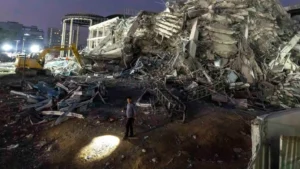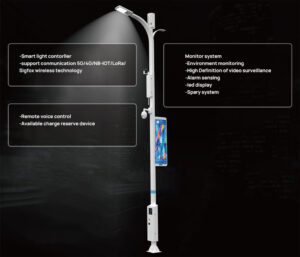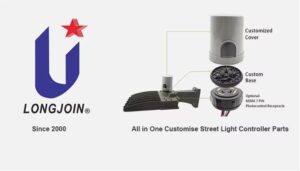How Does the ANSI C136.10 Standard Influence The Waterproofing of Photocontrol Receptacles?
Introduce
When it comes to outdoor lighting, the dependability and durability of photocontrol receptacles is of utmost importance. These receptacles are in charge of managing outdoor lights, bearing the brunt of tough weather conditions all the time. There are many factors affecting their function, with water resistance being a paramount feature.
The American National Standards Institute (ANSI) has an important part in laying down industry standards to ensure product quality and safety. ANSI C136.10 is one such norm, specifically focused on the water resistance aspects of photocontrol receptacles.
It’s essential for manufacturers, designers, and users to comprehend this standard. The following part of this write-up delves into how ANSI C136.10 impacts the water resistance strategies associated with photocontrol receptacles.

What are photocontrol receptacles?
Think of photocontrol receptacles as unique plug points, tailor-made for outdoor lighting setups.
They house a special light-sensing unit, commonly known as a photocell or dawn-to-dusk sensor. As the light intensity around goes below a specific threshold, the sensor activates the power source linked to the lighting unit, lighting up your walkway or safety area.
On the flip side, as the sun rises and light intensities grow, the sensor signals the receptacle to disconnect power, switching the light off. This automated feature provides more than just comfort – it also promotes energy conservation.
What is ANSI C136.10?
Outdoor lighting systems rely on weatherproof photocontrol receptacles to operate reliably. The American National Standards Institute (ANSI) plays a crucial role in setting industry standards for various products, including those used in outdoor lighting. One such standard is ANSI C136.10.
This standard was developed through collaboration between industry experts and stakeholders, and it addresses the specific challenges faced by photocontrol receptacles exposed to environmental factors. It outlines a set of provisions focused on ensuring adequate waterproofing.
The provisions cover key aspects such as ingress protection (IP) ratings, which define the level of protection against dust and water. The standard also specifies the types of sealing materials used to create a barrier against water intrusion, and it outlines testing methodologies to verify the effectiveness of these waterproofing measures.
By establishing clear guidelines, ANSI C136.10 helps mitigate the risks of water damage and corrosion. This, in turn, enhances the durability and reliability of outdoor lighting systems, ensuring their smooth operation for extended periods.
Waterproofing Requirements of ANSI C136.10 for photocontrol receptacles

The ANSI C136.10 standard plays a vital role in achieving proper waterproofing of photocontrol receptacles Below discussed are detailed requirements set by this standard.
Ingress Protection (IP) Ratings
The ANSI C136.10 standard uses a well-established system called Ingress Protection (IP) ratings to define the level of protection a photocontrol receptacle offers against dust and water.
These IP ratings act as a universal language, providing a clear and concise way to communicate a device’s ability to withstand environmental elements.
The IP rating itself consists of two digits:
- The first digit indicates the level of protection against solid objects like dust or even fingers. A higher number signifies greater protection.
- The second digit focuses on water ingress. Similar to the first digit, a higher number denotes better protection against water exposure, ranging from light sprays to powerful jets or even submersion.
While the exact wording of the ANSI C136.10 standard might not publicly disclose specific IP ratings, it’s likely to mandate ratings that ensure adequate protection against outdoor elements.
This typically translates to IP ratings in the range of IP44 or higher. Here the first digit represents protection against solid objects larger than 1mm and the second digit mentions protection against water splashes.
Material Specifications
Beyond IP ratings, ANSI C136.10’s waterproofing requirements also focus on the actual materials used in photocontrol receptacles. The standard specifies certain materials that must be used for the housing and internal components to ensure they can withstand the challenges of an outdoor environment.
Some key considerations include:
- Durability and Corrosion Resistance: ANSI C136.10 requires the use of high-quality materials that can resist corrosion from rain, snow, and other environmental factors. Common choices are ABS (Acrylonitrile Butadiene Styrene) plastic or Polycarbonate.
- UV Resistance: Sunlight exposure can degrade materials over time. To prevent the housing from becoming brittle or cracked, the standard mandates the use of materials like glass-filled nylon and treated metals like aluminum with anti-corrosion coatings to provide adequate UV protection.
Construction Guidelines
ANSI C136.10 also mandates specific constructional features to fortify photocontrol receptacles against water intrusion. These features act as a physical defense system, preventing water from reaching the sensitive internal components.
Tight seals and gaskets are essential, creating a barrier around any potential entry points, like where the wiring connects to the housing. Further, a secure enclosure is crucial. This ensures a tight fit and robust latching mechanism to prevent water from entering through gaps.
In some cases, the use of conformal coatings to safeguard sensitive electronics against moisture damage is also recommended.
Testing Procedures
The ANSI C136.10 standard specifies particular testing procedures to verify the effectiveness of photocontrol receptacles. These tests mimic real-world conditions, such as water sprays at various angles, dust exposure, and extreme temperatures and humidity.
By undergoing these rigorous tests, photocontrol receptacles prove their ability to withstand the elements and deliver reliable performance over time.
Benefits of ANSI C136.10 Compliance in Photocontrol Receptacles

ANSI C136.10 compliance offers numerous benefits for outdoor lighting systems. By following the guidelines set by this standard, photocontrol receptacles can provide safe, reliable, and long-lasting performance.
The waterproofing requirements in ANSI C136.10 help prevent water intrusion, which can otherwise lead to corrosion and damage of internal components. This promotes consistent and dependable operation of outdoor lights, ensuring they function as intended.
Moreover, the use of durable materials and construction methods mandated by the standard contributes to a longer lifespan for photocontrol receptacles. This, in turn, enhances the overall longevity of the outdoor lighting system.
Compliance with a recognized industry standard like ANSI C136.10 also cultivates trust and confidence for both manufacturers and users. This can be a key advantage in the outdoor lighting market.
How to choose best Photocontrol Receptacles
Choosing the best photocontrol receptacle requires considering a few key factors to ensure seamless operation and long-lasting performance in your outdoor lighting system. First, verify compatibility between the receptacle’s voltage and your lighting system to avoid electrical mishaps.
Second, select a dusk-to-dawn sensor type that aligns with your desired level of light sensitivity. Here’s where prioritizing weather resistance becomes crucial. Look for receptacles that emphasize robust construction and waterproofing measures, ideally adhering to the ANSI C136.10 standard.
This standard guarantees the receptacle can withstand harsh elements, preventing malfunctions and ensuring reliable performance.
For an exceptional choice that prioritizes these factors, consider Photocontrol Receptacles. They stand out for their superior waterproofing, exceeding the requirements of ANSI C136.10.
Final Words
Adherence to ANSI C136.10 standards ensures reliable waterproofing in photocontrol receptacles, crucial for outdoor lighting longevity. For top-tier performance, choose LONG-JOIN Photocontrol Receptacles—exemplary in durability, compatibility, and innovation.





